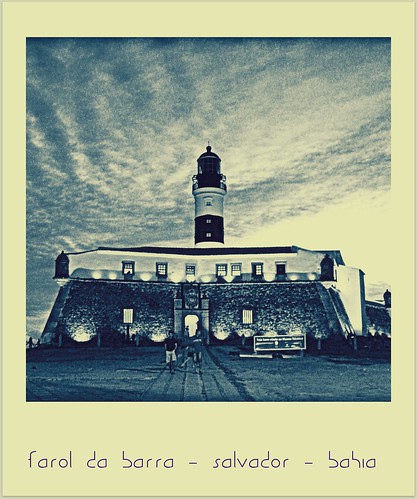
o primeiro farol do continente americano - the first lighthouse on the American continent, a photo by Fred Matos on Flickr.
The city of Salvador, Bahia, was the capital of Brazil during the colonial period and in the seventeenth century, its port was one of the busiest and most important of the continent, and had to assist vessels that arrived at the Bay of All Saints in search of Brazil wood and other wood-in-law, sugar, cotton, tobacco and other items to supply the European consumer market.
At the end of this century, after the tragic sinking of the Galleon Blessed Sacrament, flagship of the fleet of the General Company of Commerce of Brazil, on a sand bank opposite the mouth of Red River, the May 5, 1668, the Fort of Santo Antonio da Barra was rebuilt from 1696, during the General Administration of John of Lancaster (1694-1702), and received a beacon - a square tower topped by a bronze lantern glass, fueled by whale oil - according to the Institute Geography and History of Bahia, Brazil's first and oldest of the Continent (1698), when he was called to the Bar or Lookout Lighthouse Bar.
The logbook of the English buccaneer William Dampier in 1699, reports: "The entrance to the Bay of All Saints is defended by the imposing Fort of St. Anthony, whose lamps lit and suspended for the guidance of ships, seen at night."
Regency Decree of July 6, 1832 ordered the installation of a more modern lighthouse, built in England, to replace the old. Upon completion of the works, opened in December 2, 1839, the new lighting equipment catóptico stood on a tower of masonry Tronconi, with a range of eighteen nautical miles in clear weather.
In 1937, the old system "Barbier" (kerosene incandescent) lighting has been replaced by electric light, is celebrating the centenary of the first lighthouse to December 2, 1939.